Over one billion hours of YouTube videos are watched online each day.
That’s 114,800+ years worth of content!
Who knows what that number would be if it included Netflix, Amazon or Disney+?
But what I do know is this…
If you want your videos to have any chance of standing out, you need a content niche.
Today, I’m going to show you exactly why that’s true and how to find yours.
A Quick Look At What A Content Niche Is
I want to start by giving a clear definition of what a content niche is.
A content niche is a focused topic or industry you create for. It’s a core “theme” that creates a clear sense of what your videos are about and sets your audience’s expectation.
80% of the content you create should intersect with this core theme.
Example:
Magic Stream is a video on demand service for magicians. Specifically, their niche is magician education.
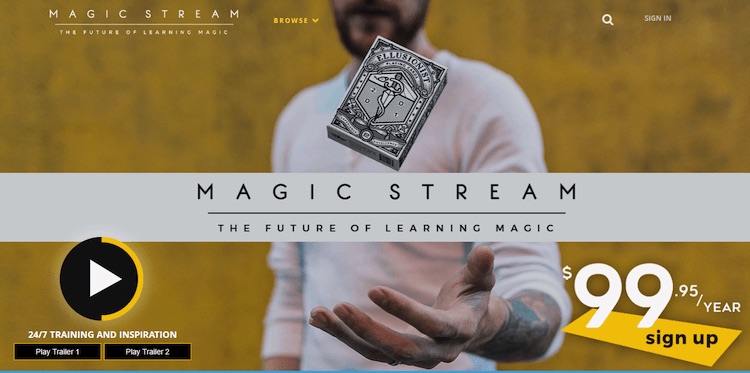
The majority of their content library focuses on teaching different types of tricks; coin magic, card magic, mentalism, street magic, and so on.
Each video covers a vastly different topic – for magicians, card tricks are a world away from mentalism – but they all intersect with the same theme; helping magicians learn new tricks.
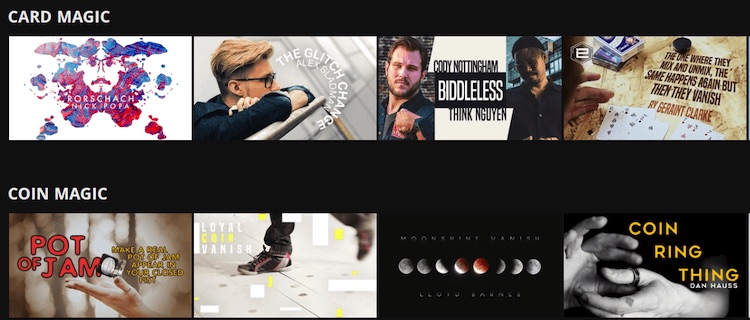
This commitment to a content niche can be found across all successful video creators.
You can likely identify the niche for many of your favorite creators. You go to their channel for a reason, and I’m willing to bet good money it’s to do with a topic.
Here are my most-watched video creators and the niches they operate in:
- Wisecrack: philosophy through media
- Just Write: video essays on writing
- SB Nation: unique sports stories
- Marty Music: guitar lessons
Some of these are really niche, but that’s exactly why I love these channels.
I have watched hours of topics like “why today’s movie villains are so relatable” or “how an immobile QB scored a 76-yard rushing touchdown” because they connect with me emotionally.
This brings us (seamlessly) to the next section…
When It Comes To Video, Niche-r Is Always Better
Niches are a scary concept.
It feels like you are removing yourself from the view of thousands of potential fans. Which, when you’re starting out, is up there with clowns, spiders, and long-term commitment.
But in today’s internet world, one thing is undeniably true; it is better to have a small core of die-hard fans than a large group of semi-interested ones.
Kevin Kelly, the founder of WIRED, once wrote about the concept of having 1,000 true fans. If you can find 1,000 people who pay you $100+ a year, you can earn a comfortable living.
1000 people x $100 = $100,000 a year
The way to connect with these fans is to create niche content. You must find a sub-section of your topic industry and make it your own. (How to do that in the next section.)
For example:
Frances Long is the owner of an incredibly niche business.
Your Book of Memories is a video website that teaches people how to create memory albums. That’s the entire premise of her content:
But it’s this niche-ness and specificity that has made her successful.
When Frances launched on YouTube in 2017 she was quickly able to amass 17,000 subscribers and 600,000 views on her channel.
When she transitioned to her standalone website in 2019 she converted 630 of her subscribers into monthly paying customers.
This netted Frances $13,000 in that short time frame, and she is now on track to earn more than $41,000 from her videos this year.
When we looked at the most successful creators on our Uscreen platform, we saw this trend time and time again.
They are:
- Choreographers
- Dirt track racers
- Jewish children’s’ entertainment providers
- LGBTQ movie creators
Setting out your stall and saying, “This is who I am. This is what I create. This is who I create it for.” is the only way to stand out and be seen.
Let’s take a closer look at how you can do just that.
How To Find Your Content Niche
In this section, I’m going to walk you through a process to find your content niche.
We’ll work through these three steps:
- Brainstorming
- Validating
- Who, what, and where
This process will require you to keep an open mind, put ideas down on paper, and give your content some serious thought. Do that, and you will have a clear content nice by the end of it!
When working through this section, I recommend you:
- Find a safe creative space
- Give yourself a couple of no-pressure hours
- Work with a pen and paper
That being said, let’s jump right into it.
Step 1: Brainstorming
Brainstorming is where we’ll get all of the ideas out of your head and down onto paper. Ideally, you’ll give yourself at least 30 minutes a day for the next week to complete this process.
While in this brainstorming section it’s important to remember that no idea is too weird, silly, abstract, or out-of-the-question. Just write it down and move to the next one!
You’re looking to generate ideas that sit in the “sweet spot” of content creation.
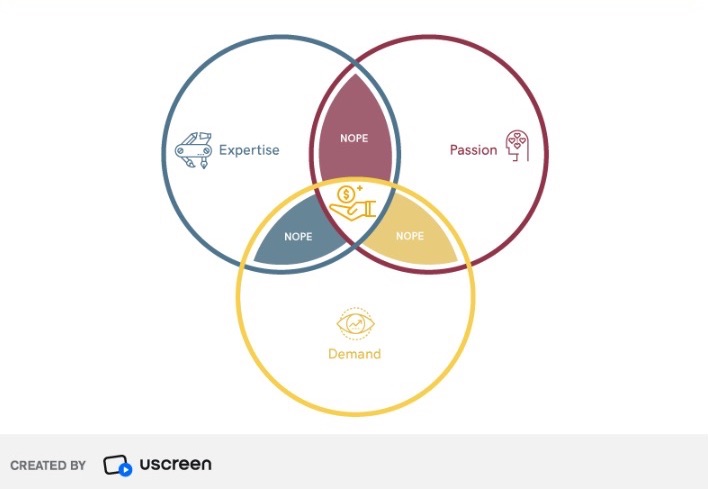
This is where three important elements intersect:
- Expertise: what you’re good at
- Passion: what you care about
- Demand: what an audience wants to know
The place where all three of these meet is where you’ll find the most viable options.
Expertise: What You’re Good At
You might not realize it, but you are an expert at lots of things. Specifically, you are what’s known as a relative expert.
Relative experts are people who know more about a topic than your average person on the street. More importantly, you know more than people who want to watch your videos.
These are skills, abilities, or topics:
- You’ve taught yourself
- You use at work
- You have as hobbies
- You can confidently talk about
A good way to start getting ideas down for this section is to answer the question, “what do people come to me for advice (or insight) about?”.
If I were to brainstorm this list for myself, it would look like this:
- Copywriting
- Speaking German
- Graphic novel recommendations
- Relocating to another country
- Buying clothes for people over six foot five
I am by no means a world-leading speaker on any of these subjects. But, relative to the majority of people, I could pass on helpful advice and ideas.
You should also look at your fields of expertise that aren’t quite hobby- or job-related. Have you taught yourself a skill – like speed reading – people could benefit from learning about?
Passion: What You Care About
For this portion, you’re going to focus on topics you are passionate about.
The best content niches are the ones driven by passion. You know, those topics you lose yourself in or can’t stop talking about.
This stage is really important.
Although you may have expertise in lots of areas, you may not enjoy them enough to build a business around. Nobody wants to get up and create things they hate every day!
Write down all of the topics you feel you might be passionate about. You can worry about whether you’re an expert or if there’s demand later. Don’t censor yourself here.
Demand: What An Audience Wants
Demand is the backbone of your content; it creates an audience and leads to profits.
When audiences look for content, they are thinking:
- Will this help me solve a problem?
- Will this entertain, educate, or inspire me?
- Will it do all of the above?
Devote some of your brainstorming time to researching topics – related to those on your expertise and passion lists – that audiences are looking for.
In step two we will look at validating these ideas, so again, don’t censor yourself. Just get down anything that seems to have a good level of demand!
Before The Next Step…
Before you move onto the next step, highlight a number of ideas from your brainstorm list that you feel could work as your content niche.
You should have the feeling these sit at the intersection of expertise, passion, and demand.
Once you have a handful of ideas ready, you can move onto the validation step.
Step 2: Validating
Now you have a list of ideas, we are going to look at which ones are viable.
Do not skip this step.
Even if your brainstorming was incredible and you feel you have a golden idea on your hands, take the time to double-check and validate it. It won’t take long, promise!
We are going to validate your idea by using these four methods:
- Google searches
- Asking people
- Assessing the competition
- Differentiating from the competition
Here’s what to do at each stage.
Perform A Google Search
Google is the quickest way to find out whether you’re on the right track.
Head over to Google and search for a couple of phrases, questions, or problems you think might relate to your topic. This will show you if there is a demand for content.
Let’s say your idea is for something super niche like teaching people how to crochet anime characters. You could perform a search like this:

The results would tell you if other people are posting (or looking for) content about this topic.
Which, surprisingly, they are:
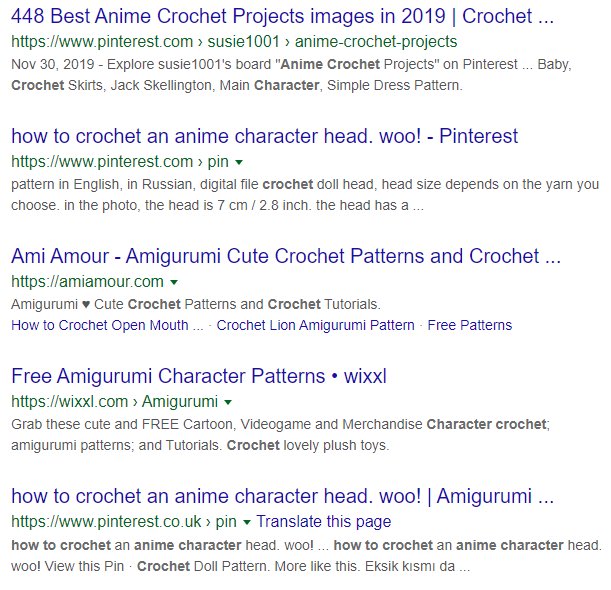
If you can see results, this is a positive sign and you should move onto the next step. If you don’t get anything concrete, try one of your other ideas.
Ask People Directly
This stage is two-fold.
You are first going to find communities around your topic. Then, you are going to ask them some questions about the niche.
Online communities tend to hang out in/on:
- Facebook groups
- Reddit forums
- Industry-specific websites
- Blog comments
You should do some snooping around in these places to see if there are active communities.
On Reddit, for example, there is the r/Crochet community. There are also a number of posts there about anime creations for people.

There might not be enough going on here for it to warrant an entire video business, though, so that’s where asking people comes into play.
You can either post in the community (if the platform’s rules allow it), or reach out to people you find in the community to ask them questions about it.
To get a good sense of the demand, you can ask questions like:
- Would you be interested in learning how to do [specific idea]?
- What is the hardest part of being [in the chosen niche]?
- What problems do you consistently come up against?
- Are there any creators you already follow?
You can make these as specific as you need to for your potential content niche. The key here is really to engage with people who may eventually become your subscribers.
Assess the Competition
Head over to platforms like:
- YouTube
- Vimeo
- Coursera
- Udemy
- Skillshare
And see what kind of competition is already out there in this niche. Are there people already creating content and getting paid for it?
Sticking with the same example, there are several people out there talking about how to crochet anime characters on YouTube. (Who’d have thought it?)
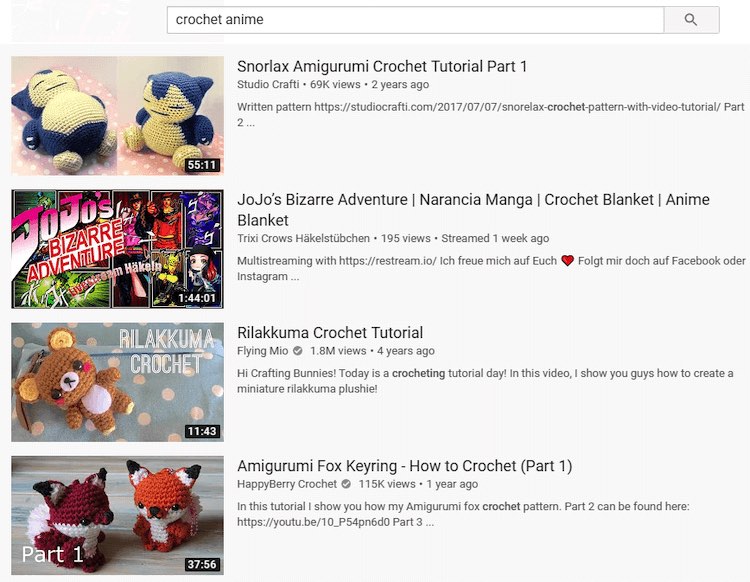
If you find competitors for your niche, don’t fret. It’s a good sign!
Competition in a niche is healthy and shows that it’s already profitable. If anything, seeing competitors just reduces your risk.
But you will need to employ the advice in the final stage of this step.
Differentiate From The Competition
Take some time to watch your competitors’ videos and get a feel for their content.
Then look for ways you could be different from them.
Here you are looking for elements such as:
- How they present their content
- Their tone of voice
- The level of depth or detail
- The quality of the video
Basically, anything that you would (or could) do differently to set your content apart from theirs. This is where you’ll tap into the true potential of having your own content niche.
Once you have all of this in place, it’s time to start focusing on your audience.
Step 3: What, Who, and Where
In this section, we are going to look at how you can create a laser focus for your content. You’ll do this by establishing the:
- What: the goal of your content
- Who: the audience for your content
- Where: the platform you’ll publish on
You’re into the final stretch now. So, let’s get this locked down!
The What
The “what” of your content is the outcome for your audience. You should be able to establish what your audience will have done, learned, or felt by watching you.
Such as:
- My videos will teach people to crochet anime characters
- My videos will entertain people with short drama stories
- My videos will inspire people to quit their job
You should be as specific as possible. Write it down and display it somewhere you can see it. This will be the “core theme” you build your content on.
The Who
The “who” of your content is the audience you are going to create for. You are going to create what is known as a persona.
This is a fictional person, made up of the eight to ten characteristics your viewers have in common. You should outline:
- Gender
- Age
- Profession
- Education
- Income
- Interests
You could also explore the emotional aspects of this. These are things your target audience might be feeling when they look for your channel.
Such as:
- They use crochet as a way to de-stress
- They feel undervalued at their company
- They are frustrated with their weight loss progress
This may not be applicable to every niche, so don’t worry if you can’t put your finger on this just yet. You’ll get a better idea of this once you start creating.
The Where
Finally, you are going to need to decide where your content is going to be published.
Are you going to:
- Use a third-party platform like YouTube?
- Create your own standalone video website using Uscreen?
If you are brand new to video content creation, YouTube is a great place to connect with your first subscribers and get a feel for videos in your content niche.
If you are more established, we recommend exploring how you can use YouTube and Uscreen together to build a profitable video business. We have a guide to that right here!
Wrapping This Up: Your Content Niche In A Nutshell
Having a targeted content niche is the only way to succeed in today’s video world.
Your content niche is the topic or industry that creates a core theme for what you create. Like how Magic Stream focuses on magician education, and Your Book Of Memories on creating albums.
The best niches come at the intersection of:
- Expertise: what you’re good at
- Passion: what you care about
- Demand: what an audience wants to know
You can establish your content niche using a three-step process:
- Brainstorm
- Validate
- The What, Who and Where

How to Sell Videos Using YouTube (and Make over $5000/Month)







